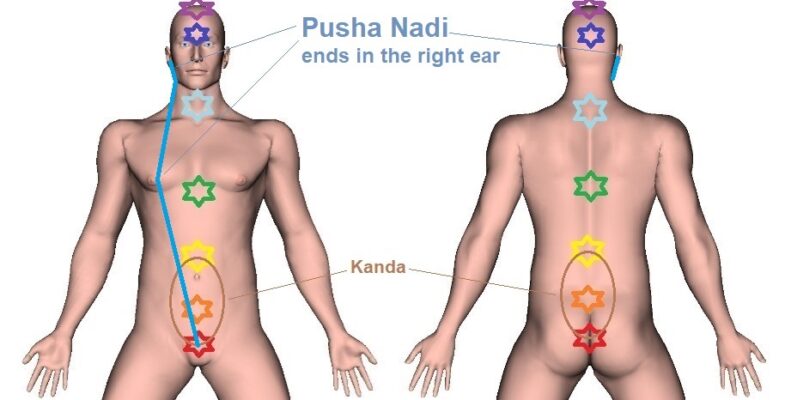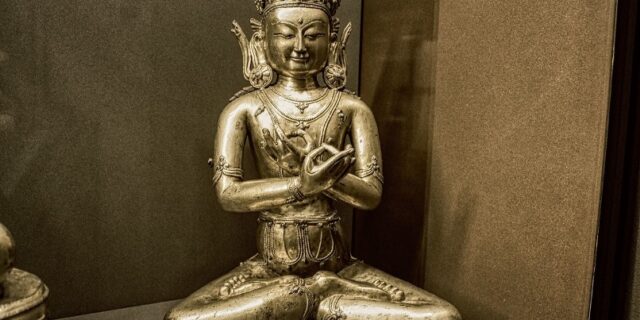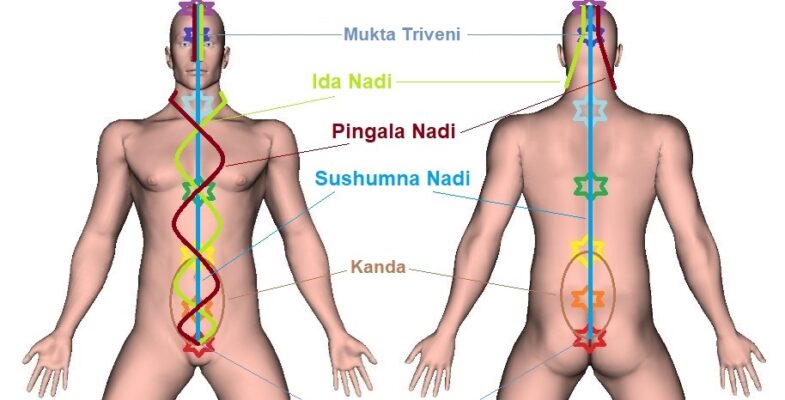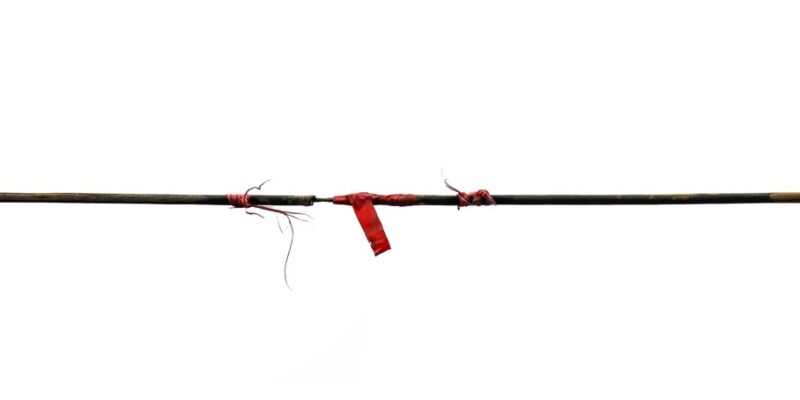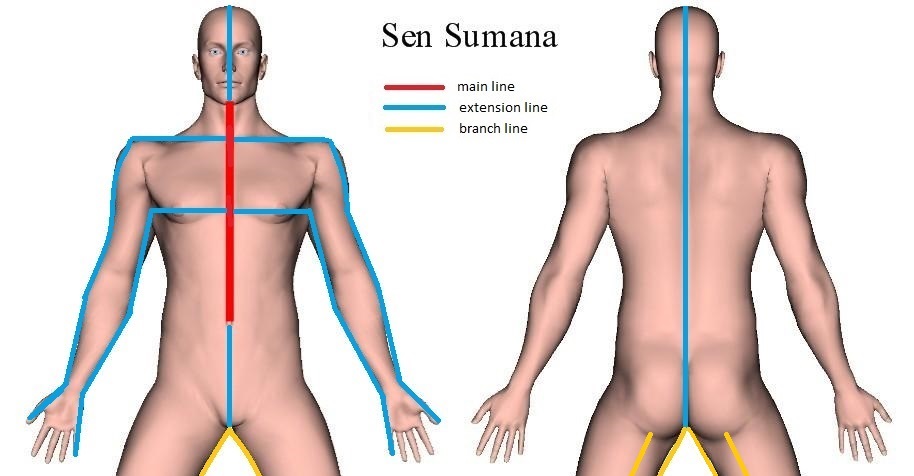
When you look at the pranic energy channel system in Thai Massage (Sib Sen) and Yoga (Nadis), it’s obvious that there’s a considerable similarity between the principal Prana channels Sushumna Nadi (in Yoga) and Sib Sen Sumana (in Thai Massage).

As it is, not only the names of both Energy Channels are evidently related by showing remarkable linguistic similarity, but also the trajectory and location in the body are predominantly the same.
That is, Sushumna Nadi (also written Susumna) starts in the Kanda (navel area), runs along (or in) the spine up to the crown of the head (to the fontanel, soft spot of the skull), and the main line of Sen Sumana starts just above the navel, travels likewise up along the spinal column, and ends in the mouth at the tip of the tongue.
So, they take almost the same course through the body, but they’re not exactly alike. But when you look at the pathway of Saraswati Nadi, one of the fourteen principal Nadis in Yoga, you will notice that Saraswati (also written Sarasvati) basically has the same trajectory as Sen Sumana, that is, starting in the navel i.e. abdominal area, and going along the spine to the tip of the tongue.
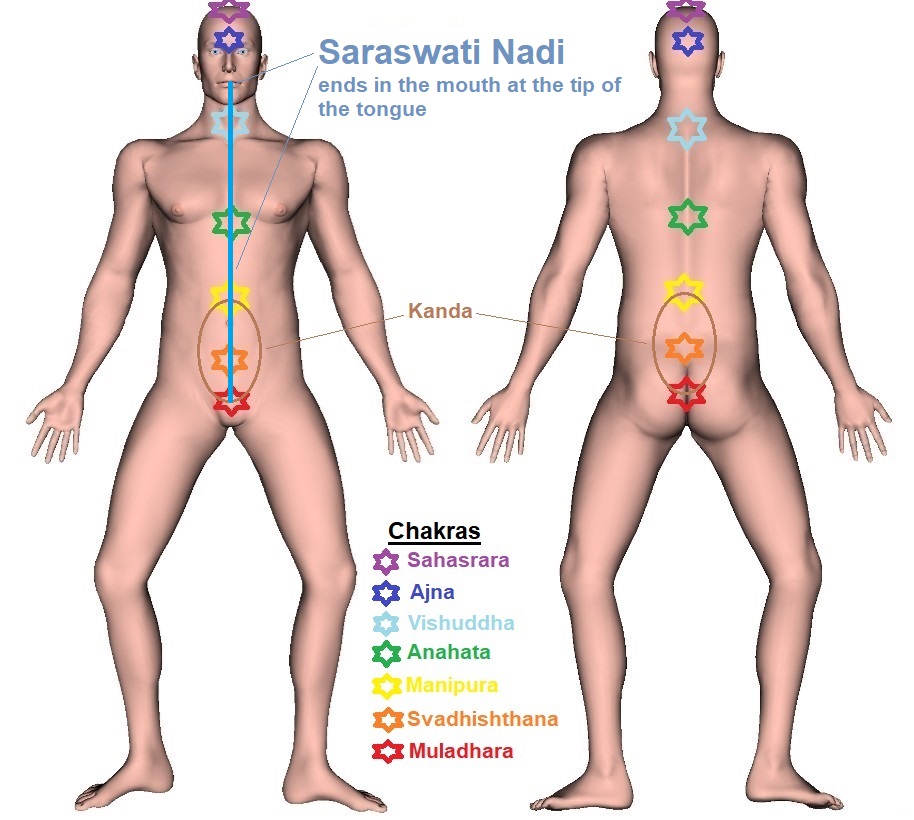
Interestingly enough, in various classical Yoga scriptures you will find that Saraswati is a common nickname or synonym for Sushumna Nadi.
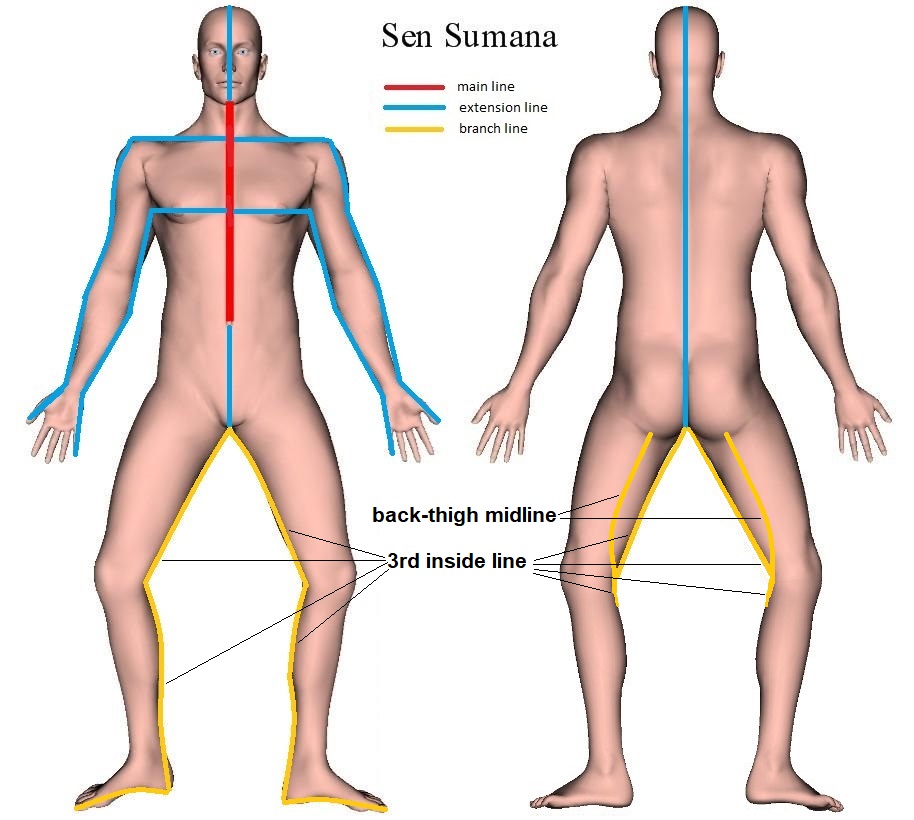
Additionally, if you would take the extension lines of Sen Sumana into account (which also cross the top of the head, see the image above), you can only come to the conclusion that the chart of Sen Sumana at the minimum represents a merge of Sushumna Nadi and Saraswati Nadi.
Another interesting observation here is the similarity of Sen Sumana with the concept of the Saktitantu (Shakti-tantu) or “cord of power” as described in 7th century CE Shaiva texts (Hindu Shaivism).

This Saktitantu, a string of Shakti power — i.e. Kundalini Energy — vertically connects nine lotuses (thought to be corresponding to the idea of the Chakras) from both feet up to the top of the head. Now, just take a closer look at the branches (yellow lines) of the Sen Sumana chart and you will notice the analogy between Sen Sumana and Saktitantu.
There’s also a notion, as is presumably stated in the Matangaparamesvara Yogapada, a Shaiva Siddhanta Tantra text dated between 6th and 10th century CE), that Sushumna Nadi “runs from the tips of the big toes to the crown of the head via the navel and heart.” Unfortunately, I couldn’t get hold of the source text to confirm this, but it seems rather plausible to me considering the trajectory chart of Sen Sumana.
At any rate, it’s clear that the Thai description of Sen Sumana has its root in (the combined) knowledge of the Indian Yogic Sushumna Nadi and Saraswati Nadi. It even seems that the outline of Sen Sumana is more extensive, or at least a more ancient conservation of the location and pathway of what is considered the most important, primary Energy Channel in the pranic system.





